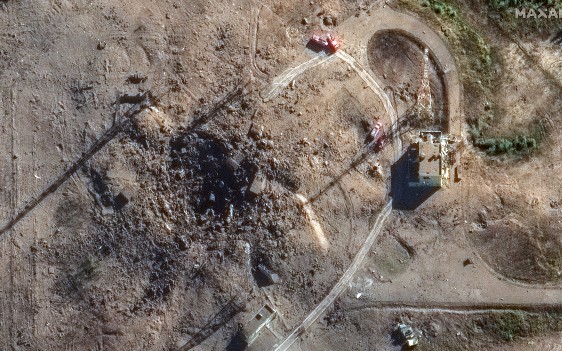Russian Missile Fails in Test Launch
A Russian missile, hailed as one of the deadliest weapons in the world, failed to launch for the fourth time, detonating during refueling at the Plesetsk Cosmodrome, located 500 miles north of Moscow. The failed attempt caused significant damage to the site.
Sarmat Missile Explosion
Satellite images confirmed the explosion of the Sarmat RS-28 missile, also known as “Satan-2,” which left a large crater at the launchpad. The blast damaged nearby infrastructure, including roads and buildings. An open-source investigation project, MeNMyRC, reported that the missile exploded in its silo, devastating the test area.
Emergency Response and Investigation

Four fire engines were photographed responding to the aftermath, likely due to a forest fire ignited by the failed launch. The liquid-fueled nature of the missile may have contributed to the accident, occurring before the actual launch could take place.
Recent Tensions and Missile Threats
The incident came just a week after Vyacheslav Volodin, a member of Vladimir Putin’s security council, stated that the Sarmat missile could hit Strasbourg in under four minutes, following an EU vote advocating for Ukraine’s use of Western missiles against Russia.
Kremlin’s Silence and Expert Opinion

While the Kremlin has not commented on the failed test, Pavel Podvig, a senior researcher at the United Nations Institute for Disarmament Studies, confirmed that the missile did indeed explode before its launch. He noted, “It’s a big crater,” indicating the magnitude of the failure.
Historical Performance of the Sarmat Missile
The Sarmat missile has seen only one successful test launch, which took place in April 2022. Despite ongoing promotion by Russian officials, including videos showcasing its capability to strike far-off targets, experts are increasingly skeptical about the missile’s actual threat. Unveiled by Vladimir Putin in 2018 as a replacement for its predecessor, the Sarmat was meant to reinforce Russia’s nuclear arsenal.
Concerns About Russian Manufacturing

The repeated failure of the Sarmat missile has raised concerns about the state of Russia’s manufacturing capabilities. Carl Bildt, former Swedish prime minister and co-chairman of the European Council on Foreign Relations, remarked that these failures reflect a serious decline in Russian defense production.
Missile Capabilities
The Sarmat is designed as a heavy intercontinental missile with a range of 11,100 miles. It has the potential to carry up to 16 nuclear warheads, positioning it as a central component of Russia’s nuclear deterrence strategy.







